- Home
- Robin Cook
Coma
Coma Read online
A Letter from Robin Cook
to His Fans
Here it is twenty-five years after the publication of Coma, and I find it a shocking milestone for me as an individual (Where have twenty-five years gone?) and, in a particular sense, a rather sorry milestone for society and medicine. My motivation for writing Coma was to dramatize the looming shortage of organs for transplantation. The medical community had been racing ahead, improving the efficacy of transplantation and providing hope for certain desperately ill people, but at the same time giving little thought to the supply side of the equation. Since I had done some transplant surgery myself, I was particularly concerned about this situation, and it became my dream that an entertaining novel and a subsequent movie could influence public policy to nip the developing problem in the bud.
Unfortunately things didn’t turn out the way I’d hoped. Although I succeeded in scaring people away from operating room 8, which certainly wasn’t my goal, the larger issue was not solved. In fact, Coma could be published today since its story line and message are even more currently cogent, with more people waiting for lifesaving organs than in 1977 and more people dying for a lack thereof. It is indeed a sorry situation because appropriate organs are regularly given over to the microbes and worms for a lack of appropriate public policy.
On a lighter note, Coma essentially created a popular new genre: the medical/biotech mystery thriller. I am pleased that the book’s reception vindicated my belief that stories of social significance involving medicine and medical research could be as entertaining and engaging as those dealing with detectives, spies, political intrigue, and traditional whodunits. As I reread the book after all these years, I squirmed a little at my ingenuousness. It was, after all, only my second book, compounded by the fact that I’d taken all the wrong courses in college for such an endeavor! At the same time I marvel that I was able to do it at all, considering the handicap of such scant writing experience and having to do it in the wee hours of the night while functioning as a busy doctor-in-training by day. But I certainly enjoyed rereading some of the scenes, like the one in which Susan Wheeler is chased into the anatomy storage locker. It gave me goose pimples all over again. In real life seeing the cadavers hanging up in a similar refrigerator had been the most visually disturbing experience of my first year in medical school.
One other point of interest: The name I selected for the hit man whom I made a really bad character is the name of one of my former roommates from college. I used the name because I’d been disappointed he’d dropped out of sight and had not contacted me for a long time. Needless to say, after Coma came out, I did hear from him!
ROBIN COOK, M.D.
November 2002
“A chilling, fast-moving suspense thriller . . . un-put-downable.”
—The Boston Globe
Twenty-five years ago, a medical thriller by an unknown doctor provided a shot in the arm of unrelenting suspense. Still considered one of the best of the genre, Coma propelled Robin Cook to the top of his field and earned him a reputation as the “master of the medical thriller” (The New York Times). Now readers have another chance to discover this classic masterwork of nightmarish possibility.
Coma
They called it “minor surgery,” but Nancy Greenly, Sean Berman, and a dozen others—all admitted to Boston Memorial Hospital for routine procedures—were victims of the same inexplicable, hideous tragedy on the operating table. They never woke up. . . .
“Gripping, terrifying, fast-paced suspense.”
—The New York Times
“Unnerving . . . will lower your temperature.”
—Newsweek
“Strikes a deafening chord of terror.”
—The Washington Post
DR. ROBIN COOK, a graduate of Columbia Medical School, finished his postgraduate medical training at Harvard. He is the author of Shock, Abduction, Vector, Toxin, Chromosome 6, Contagion, and numerous other bestselling novels.
Praise for the Novels of Robin Cook
SHOCK
“DELIGHTFULLY READABLE.”
—Kirkus Reviews
ABDUCTION
“LEAVE IT TO . . . COOK TO SCARE US ALL TO DEATH.”
—Los Angeles Times
VECTOR
“FRIGHTENING.”
—Publishers Weekly
TOXIN
“THE PROGNOSIS FOR TOXIN IS GOOD.”
—Chicago Tribune
CHROMOSOME 6
“SHOCKING AND THOUGHT-PROVOKING.”
—Associated Press
INVASION
“COOK CERTAINLY KNOWS HOW TO TELL A STORY.”
—The Detroit News
CONTAGION
“SPINE-TINGLING.”
—The Denver Post
ACCEPTABLE RISK
“[A] SUSPENSEFUL THRILLER.”
—San Francisco Chronicle
FATAL CURE
“RIVETING.”
—The San Diego Union-Tribune
TERMINAL
“A SPELLBINDER.”
—Houston Chronicle
VITAL SIGNS
“NONSTOP ACTION.”
—Kirkus Reviews
HARMFUL INTENT
“A REAL GRABBER.”
—Los Angeles Times
MUTATION
“HOLDS YOU PAGE AFTER PAGE.”
—Larry King, USA Today
MORTAL FEAR
“A CHILLING ODYSSEY.”
—USA Weekend
OUTBREAK
“HIS MOST HARROWING MEDICAL HORROR STORY.”
—The New York Times
GODPLAYER
“A PAGE-TURNER.”
—People
FEVER
“GRIPPING.”
—The New York Times Book Review
Coma
Robin Cook
SIGNET
Published by the Penguin Group
Penguin Group (USA) LLC, 375 Hudson Street,
New York, New York 10014
USA / Canada / UK / Ireland / Australia / New Zealand / India / South Africa / China
penguin.com
A Penguin Random House Company
Published by Signet, an imprint of New American Library, a division of Penguin Group (USA) LLC. This is an authorized reprint of a hardcover edition published by Little, Brown & Company. Published simultaneously in Canada by Little, Brown & Company (Canada) Limited. For information address Little, Brown & Company, 34 Beacon Street, Boston, Massachusetts 02108.
First Signet Printing, December 1977
Copyright © Robin Cook, 1977
Penguin supports copyright. Copyright fuels creativity, encourages diverse voices, promotes free speech, and creates a vibrant culture. Thank you for buying an authorized edition of this book and for complying with copyright laws by not reproducing, scanning, or distributing any part of it in any form without permission. You are supporting writers and allowing Penguin to continue to publish books for every reader.
REGISTERED TRADEMARK—MARCA REGISTRADA
ISBN: 978-0-698-16073-6
PUBLISHER’S NOTE
This is a work of fiction. Names, characters, places, and incidents either are the product of the author’s imagination or are used fictitiously, and any resemblance to actual persons, living or dead, business establishments, events, or locales is entirely coincidental.
In memory of my father,
recognition of my mother,
and thanks to Sharron.
Table of Contents
Prologue: February 14, 1976
Monday: February 23: 7: 15 A.M.
Monday: February 23, 7:30 A.M.
Monday: February 23, 9:00 A.M.
Monday: February 23, 10:15 A.M.
Monday: February 23, 11:15 A.M.
Monday: Feb
ruary 23, 11:40 A.M.
Monday: February 23, 12:10 P.M.
Monday: February 23, 12:16 P.M.
Monday: February 23, 12:34 P.M.
Monday: February 23, 1:33 P.M.
Monday: February 23, 1:53 P.M.
Monday: February 23, 2:45 P.M.
Monday: February 23, 3:36 P.M.
Monday: February 23, 5:05 P.M.
Monday: February 23, 6:55 P.M.
Monday: February 23, 8:32 P.M.
Tuesday: February 24, 8:05 A.M.
Tuesday: February 24, 10:48 A.M.
Tuesday: February 24, 11:00 A.M.
Tuesday: February 24, 11:45 A.M.
Tuesday: February 24, 2:30 P.M.
Tuesday: February 24, 7:20 P.M.
Wednesday: February 25, 5:45 A.M.
Wednesday: February 25, 11:15 A.M.
Wednesday: February 25, 1:30 P.M.
Wednesday: February 25, 4:30 P.M.
Wednesday: February 25, 7:15 P.M.
Wednesday: February 25, 10:41 P.M.
Wednesday: February 25, 11:25 P.M.
Thursday: February 26, 1:00 A.M.
Thursday: February 26, 2:11 A.M.
Thursday: February 26, 10:41 A.M.
Thursday: February 26, 4:23 P.M.
Thursday: February 26, 5:20 P.M.
Thursday: February 26, 5:47 P.M.
Thursday: February 26, 8:10 P.M.
Thursday: February 26, 8:47 P.M.
Thursday: February 26, 11:51 P.M.
Author’s Note
Prologue
February 14, 1976
Nancy Greenly lay on the operating table on her back, staring up at the large kettledrum-shaped lights in operating room No. 8, trying to be calm. She had had several pre-op injections, which she was told would make her sleepy and happy. She was neither. Nancy was more nervous and apprehensive than before the shots. Worst of all, she felt totally, completely, and absolutely defenseless. In all her twenty-three years, she had never before felt so embarrassed and so vulnerable. Covering her was a white linen bedsheet. The edge was frayed, and there was a small tear at the corner. That bothered her, and she didn’t know why. Under the sheet, she had on one of those hospital gowns which tie behind the neck and descend only to midthigh. The back was open. Other than that, there was only the sanitary napkin, which she knew was already soaked with her own blood. She hated and feared the hospital at that moment and wanted to scream, to run out of the room and down the corridor. But she didn’t. She feared the bleeding that she had been experiencing more than the cruel detached environment of the hospital; both made her acutely aware of her mortality, and that was something she rarely liked to face.
At 7:11 on the morning of February 14, 1976, the eastern sky over Boston was a chalky gray, and the bumper-to-bumper cars coming into the city had their headlights on. The temperature was thirty-eight degrees, and the people in the streets walked quickly on their separate tracks. There were no voices, just the sound of the machines and the wind.
Within the Boston Memorial Hospital, things were different. The stark fluorescent lights illuminated every square inch of the OR area. The bustle of activity and excited voices lent credence to the dictum that surgery started at 7:30 sharp. That meant the scalpels actually cut the skin at 7:30; the patient fetching, the prep, the scrub, and the induction under anesthesia had to be all completed before 7:30.
As a consequence, at 7:11, the activity in the OR area was in full swing, including room No. 8. There was nothing special about No. 8. It was a typical OR in the Memorial. The walls were a neutral-colored tile; the floors were a speckled vinyl. At 7:30, February 14, 1976, a D&C—dilation and curettage, a routine gynecological procedure—was scheduled in room No. 8. The patient was Nancy Greenly; the anesthesiologist was Dr. Robert Billing, a second-year anesthesiology resident; the scrub nurse was Ruth Jenkins; the circulating nurse was Gloria D’Mateo. The surgeon was George Major—the new, young partner of one of the older, established OB-GYN men—and he was in the dressing room donning his surgical scrub suit, while the others were hard at work.
Nancy Greenly had been bleeding for eleven days. At first she passed it off as a normal period, despite the fact that it was several weeks early. There had been no premenstrual discomfort, maybe a vague cramp on the morning the first spotting occurred. But after that it had been a painless affair, waxing and waning. Each night she hoped to have seen the last of it but had awakened to find the tampon soaked. The telephone conversations, first with Dr. Major’s nurse, then with the doctor himself, had allayed her fears for progressively shorter and shorter durations. And it was a bother, a gigantic nuisance, and as it was with such things, it had come at a most inopportune time. She thought about Kim Devereau coming up to spend his spring break from Duke Law School with her in Boston. Her roommate had fortuitously made plans to spend that week skiing at Killington. Everything seemed to have been falling into beautiful, romantic place, everything except the bleeding. There was no way Nancy could blithely dismiss it. She was a delicately angular and attractive girl with an aristocratic appearance. About her person she was fastidious. If her hair was the slightest bit dirty she felt uneasy. So the continued bleeding made her feel messy, unattractive, out of control. Eventually it began to frighten her.
Nancy remembered lying on the couch with her feet up on the arm, reading the editorial page of the Globe while Kim was in the kitchen making drinks. She had become aware of a strange sensation in her vagina. It was different from anything she had ever felt before. It felt as if she was being inflated by a warm soft mass. There had been absolutely no pain or discomfort. At first she was perplexed as to the origin of the sensation, but then she felt a warmth on her inner thighs and a tickling trickle of fluid run down into the recess of her buttocks. Without undue anxiety, she recognized that she was bleeding, bleeding very fast. Casually, without moving her body, she had turned her head toward the kitchen and called out, “Kim, would you do me a favor and call an ambulance?”
“What’s wrong?” asked Kim, hurrying to her.
“I’m bleeding very fast,” said Nancy calmly, “but it’s nothing to get alarmed about. An extra-heavy period, I guess. I just should go to the hospital right away. So please call the ambulance.”
The ambulance ride had been uneventful, without sirens or drama. She had to wait longer than she thought reasonable in the holding area of the emergency room. Dr. Major had appeared and for the first time awakened a feeling of gladness in Nancy. She had always detested the routine vaginal exams to which she had submitted and had associated the face, the bearing, and the smell of Dr. Major with them. But when he appeared in the emergency room, she felt glad to see him, to the point of suppressing tears.
The vaginal examination in the emergency room had been, without doubt, the worst she had ever experienced. A flimsy curtain, which was constantly being whisked back and forth, was the sole barrier between the throng in the emergency room and Nancy’s flayed self-respect. Blood pressure was taken every few minutes; blood was drawn; she had to change from her clothes into the hospital gown; and each time something was done the curtain flashed aside and Nancy was confronted with an array of faces in white clothes, children with cuts, and old, tired people. And there was the bedpan sitting there right in the open for everyone to gape at. It contained a large, semiformed dark red blood clot. Meanwhile Dr. Major was down there between her legs touching her and talking to the nurse about another case. Nancy closed her eyes as tightly as she could and cried silently.
But it was all to be over shortly, or so Dr. Major had promised. In great detail he had told Nancy about the lining of her uterus and how it changes during the normal cycle and what happens when it doesn’t change. There was something about the blood vessels and the need for an egg to be released from the ovary. The definitive cure was a dilation and curettage. Nancy had agreed without question and asked that her parents not be notified. She could do that herself after the fact. She was sure her mother would think she had had to
have an abortion.
Now, as Nancy gazed up at the large overhead operating room light, the only thought that made her the slightest bit happy was the fact that the whole Goddamned nightmare was going to be over within the hour, and her life would return to normal. The activity in the operating room was so totally foreign to her that she avoided looking at anyone or anything, save for the light above.
“Are you comfortable?”
Nancy glanced to the right. Deep brown eyes regarded her from between the synthetic fibers of the surgical hood. Gloria D’Mateo was folding the draw sheet around Nancy’s right arm, securing it to her side and immobilizing her further.
“Yes,” answered Nancy with a certain detachment. Actually she was as uncomfortable as hell. The operating table was as hard as her cheap Formica kitchen table. But the Phenergan and Demerol she had been given were beginning to exert their effects somewhere within the depths of her cerebrum. Nancy was far more awake than she would have liked; but at the same time she was beginning to feel a detachment and dissociation from her surroundings. The atropine she had been given was having an effect as well, making her throat and mouth feel dry and her tongue sticky.
Dr. Robert Billing was engrossed with his machine. It was a tangle of stainless steel, upright manometers, and a few colorful cylinders of compressed gas. A brown bottle of halothane stood on top of the machine. On the label was written: “2-bromo-2-chloro-1,1,1-tri-fluoroethane (C2HBrClF3).” An almost perfect anesthetic agent. “Almost” because every so often it seemed to destroy the patient’s liver. But that rarely happened, and halothane’s other characteristics far overshadowed the potential for liver damage. Dr. Billing was crazy about the stuff. Somewhere in his imagination he pictured himself developing halothane, introducing it to the medical community in the lead article of the New England Journal of Medicine, and then walking up to receive his Nobel prize in the same tuxedo he had worn when he was married.
Dr. Billing was a damned good anesthesiology resident, and he knew it. In fact, he thought most everyone knew it. He was convinced he knew as much anesthesiology as most of the attendings, more than some. And he was careful, very careful. He had had no serious complications as a resident, and that was indeed rare.

 Shock
Shock Mutation
Mutation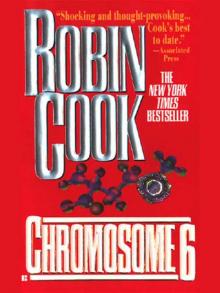 Chromosome 6
Chromosome 6 Brain
Brain Intervention
Intervention Invasion
Invasion The Legend of Parzival: The Epic Story of His Quest for the Grail
The Legend of Parzival: The Epic Story of His Quest for the Grail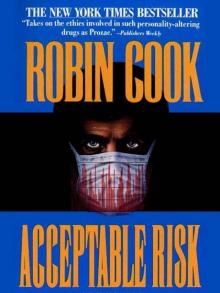 Acceptable Risk
Acceptable Risk Cell
Cell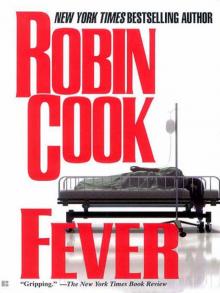 Fever
Fever Death Benefit
Death Benefit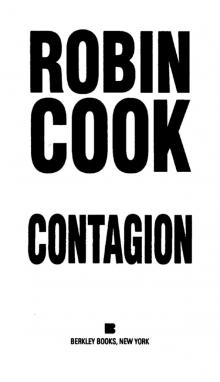 Contagion
Contagion Mindbend
Mindbend Coma
Coma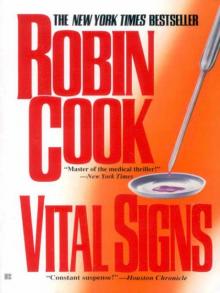 Vital Signs
Vital Signs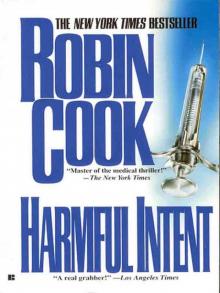 Harmful Intent
Harmful Intent Critical
Critical Foreign Body
Foreign Body Marker
Marker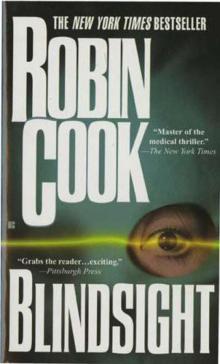 Blindsight
Blindsight Terminal
Terminal Sphinx
Sphinx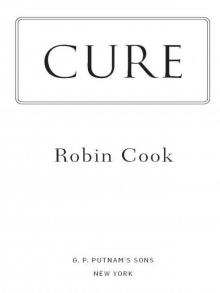 Fatal Cure
Fatal Cure Host
Host Charlatans
Charlatans Crisis
Crisis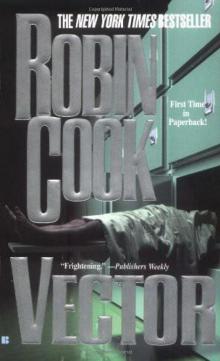 Vector
Vector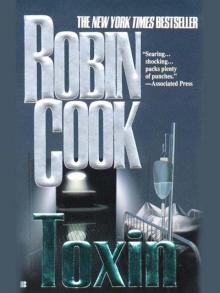 Toxin
Toxin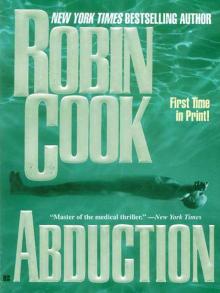 Abduction
Abduction Viral
Viral Pandemic
Pandemic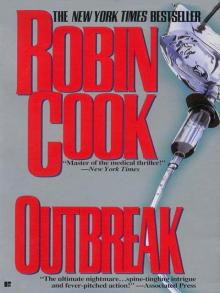 Outbreak
Outbreak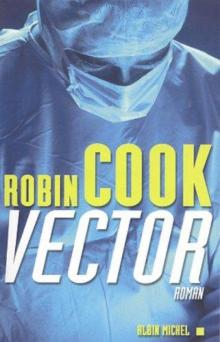 Vector js&lm-4
Vector js&lm-4 Godplayer
Godplayer A Brain
A Brain Year of the Intern
Year of the Intern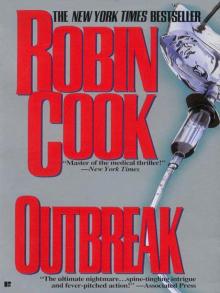 Outbreak dmb-1
Outbreak dmb-1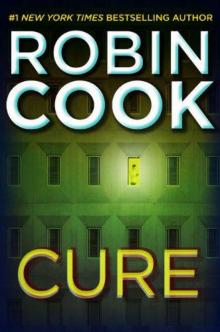 Cure
Cure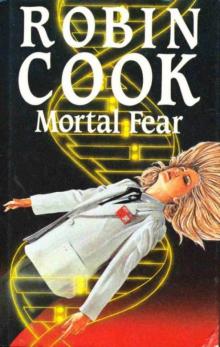 Mortal Fear
Mortal Fear The Legend of Parzival
The Legend of Parzival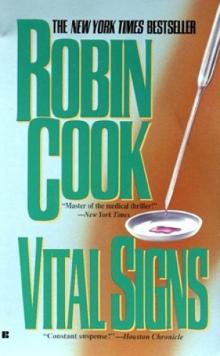 Vital Signs dmb-2
Vital Signs dmb-2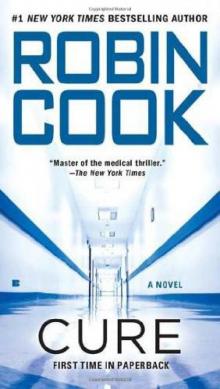 Cure (2010) sam-10
Cure (2010) sam-10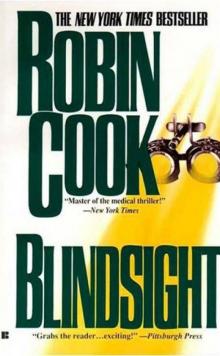 Blindsight sam-1
Blindsight sam-1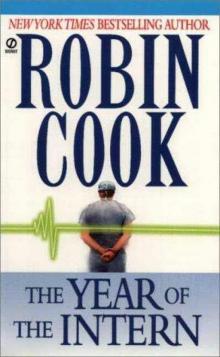 The Year of the Intern
The Year of the Intern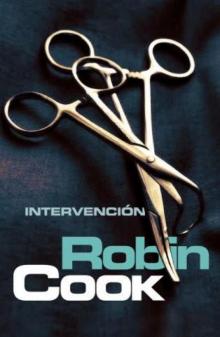 Intervention sam-9
Intervention sam-9 Foreign Body sam-8
Foreign Body sam-8